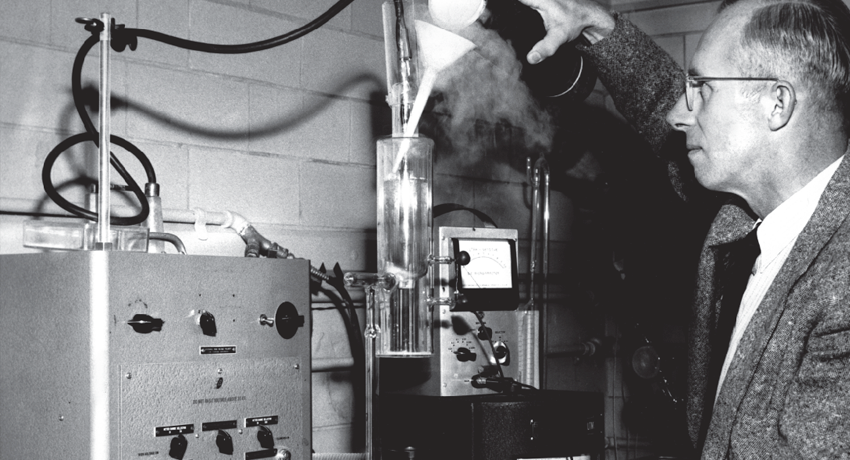Müller sees an atom: Invented the field ion microscope
Erwin Müller served on the faculty of Penn State’s Department of Physics from 1952-1976. The German-born and -educated physicist is known as the “first man to see the atom.” A brilliant experimentalist, Müller’s invention of the field emission microscope (1936), the field ion microscope (1951), and the atom probe (1967) were seminal contributions to the fields of materials science and nanotechnology.
Although the atomic nature of matter was well accepted theoretically, until Müller’s invention of the field ion microscope there was no direct proof of the existence of atoms.
His field ion microscope was capable of giving a resolution of 2.5 angstrom. Müller’s paper in 1951 provided “the world’s first view of the atomic nature of solid matter and began an entirely new field of study.” (Melmed, 2001)
Müller was named Evan Pugh Professor of Physics in 1968. He was elected to both the National Academy of Engineering and National Academy of Sciences. In 1977, President Jimmy Carter awarded him the National Medal of Science posthumously.
Atom seen in a field ion microscope


